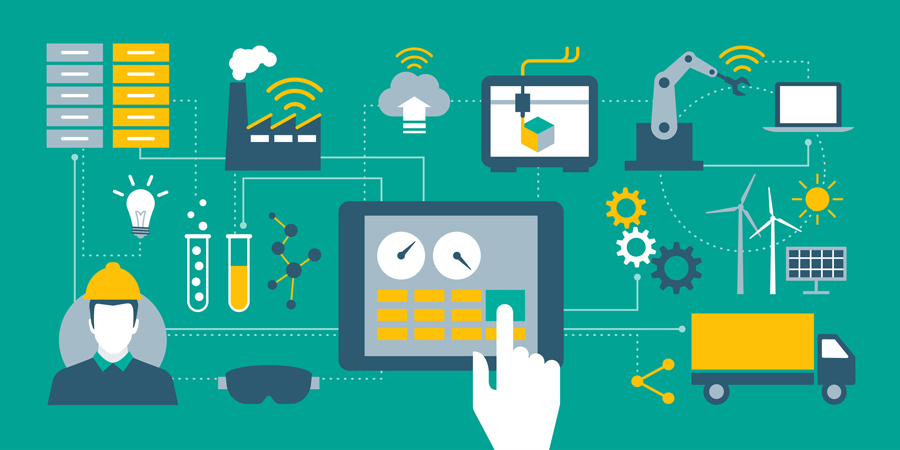How does Big Data save logistics?
How does Big Data save logistics?
If anyone doubts the usefulness of Big Data in logistics, it can be easily demonstrated with one of the well-known examples:
UPS drivers (almost) never turn left.
The CEO of the company told Fortune magazine in 2011 that after a thorough analysis of routes, delivery times and other statistics, their engineers found out that drivers should not turn left.
As a result:
- Their vehicles had to travel nearly 33 million kilometres less,
- 350,000 more packages were shipped and
- 20,000 tonnes less carbon dioxide has been emitted into the atmosphere.
How can this work? Because it was clear from the data that turning left reduces the chances of an accident and cuts delays caused by waiting for a gap in the traffic, which would also waste fuel.
This is Big Data: data collected by sensors and other IoT (Internet of Things) devices, processed with data mining tools to show how processes can be made faster, simpler and more cost-effective.

The response of Big Data to the logistics challenges
The most important indicator in the logistics industry is reliability: partners provide a vital element in the supply chain. Therefore delivery processes must be accurate and safe.
Especially when we consider that the needs of our partners can change constantly. For logistics companies it is not enough to adapt, they should predict how many vehicles, employees, fuel, warehouses will be needed and how to optimize their costs.
This task is carried out by predictive analytics: you can predict the potential challenges that need to be addressed in the business process and improve the quality of service and relationship with partners.
In addition, analytics based on the Big Data also helps to increase the efficiency of the operation: as you can see in the UPS example, you can optimize transport routes, fuel consumption, number of employees and placement, and so on.
Thus, not only costs and prices can be reduced, meaning that partners can provide higher quality services at even lower prices, which can bring significant benefits to competitors.
This task can be carried out by predictive analytics: it can predict the potential challenges that need to be addressed in the business process and improve the quality of service and the relationship with partners.
In addition, analytics based on the Big Data also helps to increase the efficiency of the operation: as you can see in the UPS example, you can optimize transport routes, fuel usage, number of employees, and so on.
Thus, not only costs but also prices can be reduced, meaning that you can provide higher quality services at even lower prices, which can bring significant benefits to competitors.
Where can data mining help in logistics?
Let's look at some areas where IoT sensors and Big Data can actually bring tangible benefits:
Distribution centers and warehouse management: Proper allocation of capacity and available space by the optimization of work is a complex task. Big Data gives you the ability to inventory more efficiently, even in real-time, always have enough space and provide unhindered shipping.
Distributing network resources: how to scale the supply chain so that we could always meet market needs? With Big Data, we can precisely predict demand, optimize fleet utilization and carrier assignments, and increase security.
Route planning: If we know exactly the routes and the time expenditure of drivers, we can reduce the time and costs of transport. Meanwhile, we can maximize vehicle utilization and accurately determine delivery times.
Customer management: reliable, accurate and inexpensive delivery makes customers more satisfied and committed, we have more opportunities to get partners, while service costs can be reduced by resource utilization and job optimization.
Marketing: By using the right analytical we can acquire new customers, upgrade existing ones to new levels, predict our future growth and revenue, or design new business lines.
Risk analysis: we can accurately estimate the risks, the chance of accidents and extraordinary events, the amount of additional costs and the loss. We also know from the data what business challenges we face in the company and on the market, and we can identify unique offers through competitive analysis.
Maintenance: the maintenance work, renovations and asset purchases can be accurately planned, amortization can be minimized, risks can be reduced, service quality can be improved and extraordinary costs can be avoided.
Let's take some of the most common challenges and see how Big Data can help in solving these.
The last mile
The "last mile" phenomenon is well-known in logistics: it is a matter of fact that during the transportation process, the last short section usually represents the biggest challenge or demands the greatest effort. It can even be up to 28% of the total shipping cost.
It's easy to see why: finding the exact address, problematic or expensive parking, and handling fragile packages play a role in it.
Previously, this last stage was a "black box", hence logistic companies did not see how it is being done, but technology now allows this: data collected through sensors can optimize transport solutions, create new guidelines that reduce these costs.
Transparency and reliability
Big Data also helps the logistics companies to acquire new customers transparently.
Those who do not use the opportunities provided by data mining can only estimate for each new customer how much time will be spent and what costs will appear, which is not ideal for either party.
The sensors, however, collect the data that a certified third party can evaluate. This information can be added to proposals for new customers. People are often mistaken, over- or underestimate certain factors, however algorithms always provide accurate analysis.
IoT in warehouses
It's just as important to have accurate and immediate information in the warehousing as it is in transporting.
Each stored product and package can be marked with RFID technology, which is not only show us exactly what items are in stock. The data can include the number of packs per package, and sizes, so an automatic system will know immediately how many products arrive or leave, and where to place it to maximize the available space.
Sensors can be used to track the utilization and status of the devices, and we will know that devices (such as a running belt or a fork lift) are in use and when they are idle.
As encoders and sensors help us to know exactly where we store the goods, employees can be managed perfectly and coordinated in real-time. Indeed, in some cases, you can switch human resources off with devices such as Automatic Guided Vehicles (AVGs).
How much does the market spend on Big Data?
How much we invest in IoT solutions and Big Data analysis is only limited by the company's financial possibilities. IoT spending is estimated to reach $ 800 billion this year, of which $ 200 billion is specifically invested in supply chain optimization.
Only GE spends a billion dollars to extract data from sensors built into various devices and optimize its processes through data mining.
As a first step, it is enough to provide the fleet with sensors that are able to track the position of vehicles and carriers and register routes and delivery times - which in itself can provide enormous help in improving the service.
Nowadays sensors and related softwares are not too inexcusably expensive: spending on it is definitely worth it, otherwise the biggest logistic companies would not invest billions of IoT developments.
Sources: Business Insider, DHL, Supply Chain Digital, DHL, Supply Chain Dive, McKinsey


